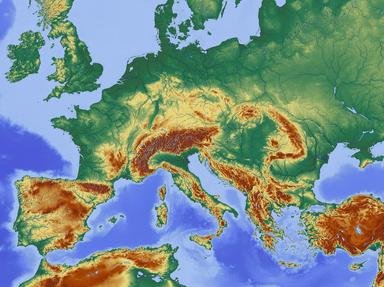Quiz Answer Key and Fun Facts
1. GEOGRAPHY: The Isle of Man, sitting halfway between the islands of Great Britain and Ireland, has but one mountain. What is its name?
2. WORLD / LANGUAGES: UNESCO declared the Manx language extinct in 2009.
3. ANIMALS / CATS: The unique Manx breed of cats can be born one of three ways; which is NOT one of these ways?
4. GENERAL / SUPERSTITIONS: Shh! Which pesky rodent's name are you not allowed to speak by name on the Isle of Man, lest you curse the island with bad luck and bad weather?
5. SPECIALIZED HISTORY: The Isle of Man boasts the first parliament to give (at least some) of which class of people the right to vote in national elections?
6. SCIENCE / ASTRONOMY: The Isle of Man is a fantastic place to view the night-sky phenomenon known as the Northern Lights, also scientifically known as what?
7. HOBBIES / FOOD & DRINK: Which of these tasty potato-based repasts has traditionally been regarded as the national dish of the Isle of Man?
8. SPORTS: What was the traditional national sport of the Isle of Man that virtually disappeared by the end of the 19th century?
9. PEOPLE: Which of these former Vice Presidents of the USA, though born in Indiana, is of Manx descent?
10. MUSIC: Among which of these pop/rock groups were the founding members born on the Isle of Man?
Source: Author
gracious1
This quiz was reviewed by FunTrivia editor
agony before going online.
Any errors found in FunTrivia content are routinely corrected through our feedback system.
